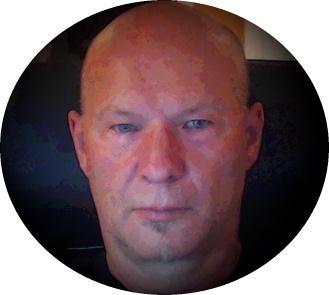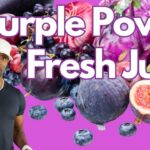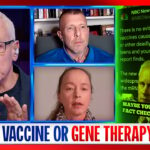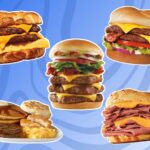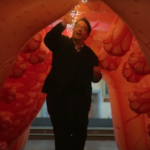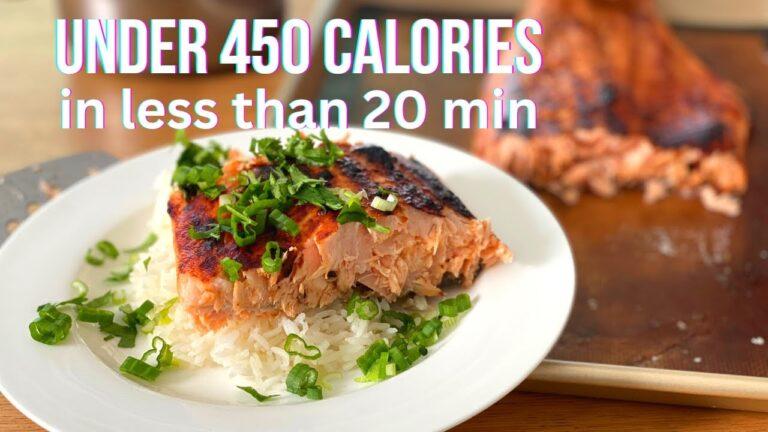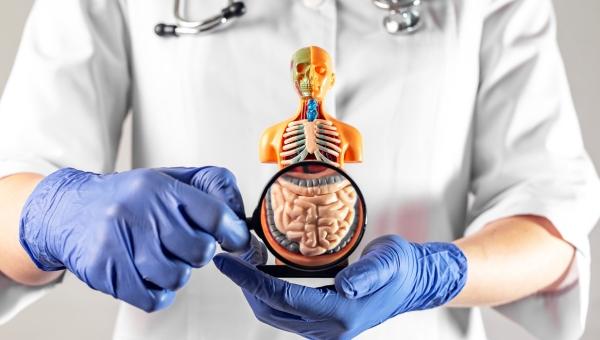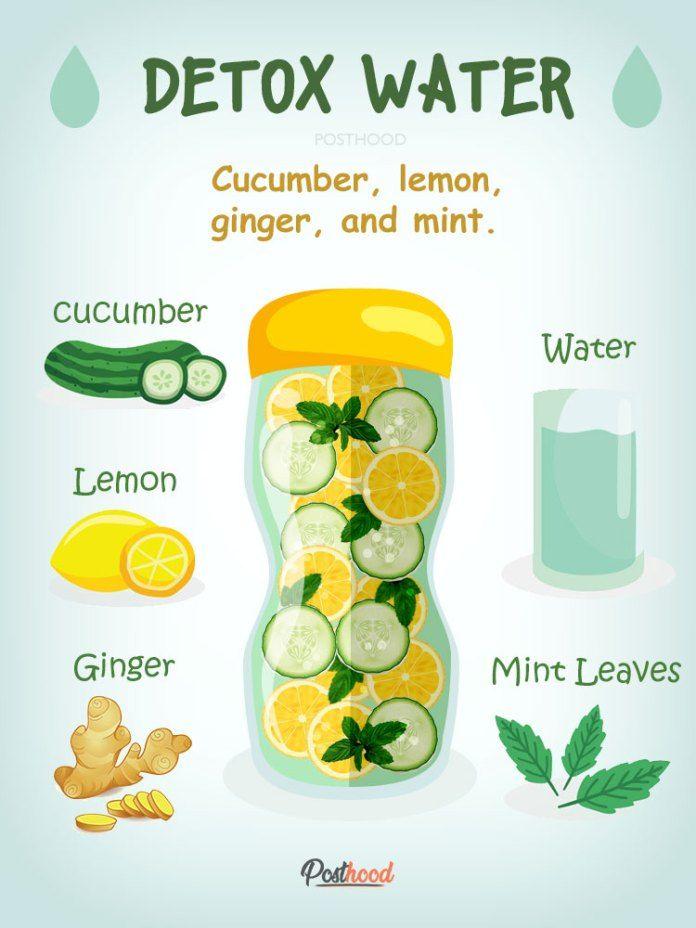I’ve heard your story multiple times. I just think you have such a powerful story that can really change lives and give people so much hope. So could you start by giving some background on who you are and why you ended up going on this crazy health-seeking journey? Sure, as many of us do, it was very much by accident. It was not an invitation.
Well, maybe it was. It was like an invitation from the universe to change, but I was studying biology and ecology on an island in the Bahamas and I was living there. It was a remote island. There were about 30 of us on the island at the time. I was very healthy.
I was training for Iron Man at the time. I was an athlete and 18, you know, so I didn’t even understand chronic illness or even think of it before this happened, but we all got infected with a bug through our food, specifically through the chicken on the island, and many of us felt very, very ill. I was one of the last ones that did, and it was a very high fever. It was around 106 and they couldn’t really bring it down, but at the time I thought, as I think most people do, you know this will just be fine. I’ll be fine next week and we’ll go back to school and life will resume and it was anything but.
It was like falling down the rabbit hole in Allison Wonderland and ending up in a whole other universe where no part of the body works – and you don’t know what’s going to be malfunctioning 5 minutes from now or an hour from now, and it was a very confusing first three years after that infection. I remember really never feeling myself again. In fact, I just kept thinking, maybe this is like mono, it’s gonna fade at some point and I’ll be fine. Not long after it, my health really took a deeper downhill turn where I had to leave school for a period of time and spent my first three months in bed. But then, you know, I got bored and I applied for scholarships and I got out of that and it was a lot of ups and downs for the 12 years that I was sick, but none of them were real ups.
You know, you really set a low bar for yourself when you’re chronically ill, that low bar feels amazing in comparison to where you can go in the depths of illness. But you know it’s nothing like being healthy, so it’s always compromised. It’s always kind of like having a really bad hangover or a flu while you’re functioning, but it’s better than when you were vomiting, so it’s great. So lots of ups and downs during those years and at year seven, I became so bad that it wasn’t just like a few months of being bedbound and then back at school. It was just nothing, nothing worked anymore.
My organs started to really turn downhill. I couldn’t read a book and remember what I had read. Everything really just fell apart. I lost an enormous amount of weight. I wasn’t absorbing my food.
Doctors were very afraid and I spent about four years in bed at that time, and that ended up being the biggest blessing because as long as I was semi-functioning, I was not dealing with the illness at all. You know, I thought I was being responsible by eating healthier than my friends, but I didn’t know what I was doing. I was eating a lot of salads and noodles and chicken and things that now I would never recommend to someone, at least not in that combination. But also, I was doing a lot of escapism in the first seven years. One of the things that came along with what I ended up getting diagnosed with, which was dooma and pots, and then subsequent kidney disease, liver disease, Hashimoto’s, Graves.
The laundry list is long, but the worst thing really was the neuropathy. I had extreme nerve pain from the chest down that just was unwavering and in my young self, I just wasn’t mature enough for that kind of pain, and so I did a lot of escapism. But at year seven, I couldn’t escape anymore and, like I said, that ended up being the greatest gift because it forced me to look at the situation differently. I couldn’t escape it. I couldn’t change the physicality of it.
The medicines didn’t work, and so I really went on this inward journey. This dark night of the soul for several years, where I transformed the pain and fully fell in love with this body that before, I was just hating and felt betrayed by. It was this beautiful gift of falling in love with myself on a very deep level and also acceptance of the illness. It was really in that mental work that I fully calmed down and got present, and I did end up finding a diet that worked. I tried 16 or 17 different diets for long periods of time, not a month.
I would do them for three to six months, at least along with a lot of lifestyle things, and eventually one stuck, and that was the ketogenic gaps diet. Very, very, very low plants, very high animal fat, and that actually put me into remission. What I would consider quickly. It was about a year to remission, but when you’ve been sick for 12 years, that’s amazing. So I was really excited about that.
But I honestly don’t think the diet would have worked if I was in a stress state. If I was still fighting my situation, if I was still angry, sad, all those kinds of things. We can see from many studies now that have come out that when someone is stressed, it suppresses the immune system. Even something like a blister can take 60% longer to heal when you’re stressed. So that gift of that time to kind of transform my inner world, despite the outer world still being the same, the pain still being the same, and the disease process still the same, I really think allowed my body to be able to heal once I brought that food in.
So anyway, that’s my theory, looking back on it. But of course, when I did heal, I went back and finished my undergrad, which I had been in my last semester of when I felt so extremely ill, and after that, I went to school for nutrition, really thinking it would be a hobby and ended up really busy ever since for the last 10 years. So I’ve been working with training practitioners. I do a practitioner training course. I work with about 60 to 80 patients, clients a week, and then on the weekends and in the mornings, I do research with tribes around the globe and communities around the globe still eating their traditional diet.
Wow. You have a crazy story, and every time when I’ve heard you talk about it, you’re always smiling. So it makes it seem like it wasn’t as extreme as it was. I’ve even heard you say before that you couldn’t lift a book or even like a coffee mug, and I think just like you, it always makes it sound like it was very underplayed than how much it must have really changed and took over your life. Oh, fully.
I mean, it took my life away. Honestly, is what it did. Something I think a lot of people don’t realize who haven’t gone through an illness is that when you get humbled over and over again by the illness, and you keep thinking, surely it can’t get worse than this, and then it does. It gets so much worse than that. And by the time I got to where I was in bed and I couldn’t hold things and I props had to be put up to hold my body up if I was going to sit up, these kind of things, I was so incredibly humbled by the experience, and it really causes a very painful death to the identity, right?
Because when you’re sick, you can’t do your hobbies. It wasn’t like I was painting, I wasn’t reading, I wasn’t an intellectual anymore, I didn’t know the cool music. I had nothing to talk about. I had no conversations I could have with people where I could really join them in any format, and so you really kind of die to your old self, and it’s in that death, if you actually allow it to happen, which I fought it for so long, I really held on to my old life. I thought I was so cool before, so you know I wanted to get it back, and it was in the actual death of all those identities that I had that this huge freedom came about.
This lack of stress about the fact that I didn’t have a house, I had no money, I had no way to make money, I wasn’t getting married, I didn’t even have a boyfriend. Kids, like you’re probably never going to be a mom. That was a hard one, that was like a really hard one to let go of, but in letting go of all of that, then there was just this huge amount of freedom, of space, of lack of stress that comes out of that. So the whole thing, I certainly wouldn’t want to go through again. I mean, you could not pay me any amount of money to go through again.
You’d be like listen, I’ve got a billion dollars for you. You can go through it. If you go through this again, I would genuinely say no. I’m not a masochist, but I’m utterly grateful for it because I do something that not many people are lucky enough to do. I do something where I feel really good about my work.
Like I leave work and I have more energy, and I see people get better every day, and that’s incredibly uplifting, and these people become my friends because we’re going through something major together as they heal their bodies, and I get to travel the world and live like the National Geographic magazine. So I have no complaints, and I am utterly grateful for having gone through it. I mean, and then there’s all the interpersonal reasons as well. I got so close with my family, and there’s just a lot. There’s so much good out of every situation, and that one was gold for me.
You are so wonderful. You’re such a breath of fresh air. So many people would take something and then not have the hope. I wonder if, when you were bedridden, were you ever thinking like this is the way my life’s going to be completely? Yeah, I mean I had many dark years really.
The first seven years were very dark for me, and the first year of being bedbound was the darkest of my life. It was incredibly isolating and lonely and terrifying. Like, it’s really terrifying to not be able to take care of yourself and to be reliant on others and to not be contributing to communities or to anyone else. It’s, you know, we think it’s so nice to give things to others, right? We all like to give, but receiving actually doesn’t feel good.
And when you’re disabled, all you’re doing is receiving. So you don’t have anything to uplift, you know. Unless you create something inside, but we can always create something inside. So yeah, very dark for sure. I mean, I really lost that mental game for many years, and that’s part of why I really emphasize it so much with my clients, well with everyone I get to talk to.
I really try to emphasize the mental game because if you can ace the mental game, it doesn’t actually matter if you’re still sick. You don’t actually care. You’re really happy, and typically when that happens, wellness comes afterwards anyway. So great. Do you think that, when you talk about that, you found the ketogenic gaps diet, but you also know that you had to reduce your stress and just have other lifestyle changes.
Like what are those other lifestyle changes you were doing? I was doing so much. It was really a full-time job. So after that first year of being so depressed in bed, and that brought me up to year eight of the illness, and again, it was 12 years. So it was a long time before I even started healing, but I decided I was gonna fully find joy within my body somehow while I was in this bed.
And so I started really taking myself less seriously, putting less importance on things, and building out this whole day of things that would bring me joy. Part of which were just ridiculous, so that I would take my situation less seriously. But it I mean, it was very different based on how, you know, where I was in the wellness journey and what had improved and what hadn’t. But when I was truly bedbound, I was doing the light in my eyes. So I got one of those headlamps.
I was doing the light in my eyes. I was doing meditation a lot. I did about two to three hours of meditation a day. I would write out about a hundred different affirmations and really try to feel what they were, instead of just say them, and make them true in some way. Like I would reframe it.
So it was really true. So obviously, I wasn’t saying like I’m rich, I wasn’t doing that. It was more like, you know, safe all is well. Everything is working out for my highest good. So I was doing things where I wasn’t lying to myself, but where it would bring me to an elevated state of emotion, and I did a lot of that.
And then I started with small exercises like lifting my shoulders because, again, I couldn’t carry a coffee mug at that time. So I would do really small things, and I just worked at them every single day. I had this massive checklist on the side of my bed where I would make sure I was getting everything done, and if I saw myself only getting 80% of it, then I would ask myself, “Okay, Mary, do you only want to get 80% better?” kind of thing, and then I would get myself to do them all. I did lots of things I didn’t know if they would work or not, but I figured, you know, let’s just throw the kitchen sink at it.
So I was doing EFT every day and writing my accomplishment list. That was probably the most helpful for my mental state going through that because it’s easy to assume that you’re not accomplishing anything, but when you’re really sick, brushing your teeth is a huge deal. It’s amazing. It takes your whole day’s worth of energy to go and do, and so putting that on the list would make me feel really good about myself, and then that motivated me to do it the next day and to do something else. In addition, and so I still have that journal, and you can see it go from just brushing your teeth to every single day, building a little bit out, and then you go from the mental story of “I can’t do anything, I’m too sick” to “I am accomplishing a lot, I am like this is really good.
I’m doing a lot, and sick people can’t do all these things, so it gives you a logical reason to fight against it. But yeah, that’s why I teach so many different diets, and part of that also is because I did try so many diets before I healed, and now I’ve done all of them. I don’t teach anything I haven’t done for a significant amount of time. But when I went into remission, I had been the first case, and then within the next two to three years, there were two other people that went into remission with my condition, and they both became famous. And one of them had done a diet I had tried and didn’t work for me, and I mean, I was on that for a really long time.
So it wasn’t a lack of effort or not doing it fully because I really took this like my job, so I really did the diets properly. And then the third person went into it on an anti-histamine diet, which usually won’t put anyone into remission. It’s a bit of a Band-Aid diet, the way it’s taught, you know, just lower histamine foods with starches and things like that. So it kept my mind open to the fact that absolutely people can heal on different diets. But not that people have to.
I think people get really lost in the “I’m different, I’m special, and I need this kind of very unique thing,” and there are some aspects that need to be tailored, having to do with timing, how severe your illness is, what you’re breaking down at the moment, that kind of thing. But I think we can get really lost in the fear that we’re so unique that we can’t heal, that we prevent ourselves from doing what we really need to do. So yeah, everyone could be healthy on carnivore or on gaps, most likely, but especially once you get the microbiome in line. But there’s lots of different ways to go about it. So I have a lot of questions based on what you just said, but with you’re saying there’s kind of two different kinds of lectin.
Can you just talk more about, even I just think of lectins as lectins, but what are the like? The bad one, there’s yeah! There’s many different types of lectins, unfortunately, in terms of those that are classified as toxic scientifically and those that are classified as non-toxic. There’s no discerning word. Someone out there needs in the scientific community needs to make those categories because that’s part of why there can be so much confusion about lectin, right?
People will go online and you’ll see a big battle about, you know, one person saying, “Oh, lectins are terrible. They’re gonna kill you and give you autoimmunity,” and another person being like, “Lectins are fine.” They’re talking about different kinds of lectin. The lectin in an avocado is not harmful to humans at all. In fact, it can do some beneficial things.
Whether or not you tolerate avocado is another story, but there’s other things in there. But then you talk about a scientific toxic lectin, and it’s a very different story. We know that that is deeply correlated with autoimmunity, that it spikes your insulin, it upsets the blood sugar, these kinds of things, and that it is a toxin. And when we’re compromised, the worst thing we can do is increase our toxin load. We typically already, because of the imbalance in our microbiome when we’re sick, have a bit of a toxin factory going on in our belly.
So even when we’re living a fully clean lifestyle, you know, washing our hair with egg yolk and not using anything that’s not edible on the skin and sleeping in cotton sheets and not wearing polyester and all those kinds of things, you can still have a huge toxin load from your microbiome alone. And so we really want to lower that toxin load as much as possible and give our detox organs – liver, kidney, colon, and skin – an easier go of it, make their job a bit easier. So yeah, lectins are really quite problematic. In my eye, I’ve just seen so many reversals that I didn’t expect, to be honest, when people pulled it out. So I’m pretty convinced on that one.
So, which mushrooms are fine? Yeah, mushrooms are, in fact, mushrooms are beneficial. I’m a big fan of them. If the person tolerates them, this would be more like bell peppers, tomatoes, eggplant, cashews, potato, regular potato, a lot of seeds like sunflower seeds, chia seeds, have them as well, and then the squashes – zucchini, yellow squash – these kinds of things. Okay, so I guess my question is, I have done a stricter carnivore diet at one point, and then when I, and I used to be able to eat everything, right?
I was eating avocados, I was eating chips and everything possible. And I wasn’t having reactions or I never noticed, like, “Oh, I have a pimple” or “I have this red rash.” I think because when you’re eating everything, you just can’t tell what it is. But then when I went more strict carnivore and then I had an avocado again, which I never had issues with, I had this red rash and then something else, like we had some chicken bone broth that had natural flavors in the package, so then my hands got really dry. So I just feel like I have become weaker because I did strict carnivore, whereas now my gut just can’t handle things that it used to in the past.
And so I’ve heard too before, like Dr. Gundry or just other doctors talk about how you want to have as much variety in the gut as possible to live the longest life. Whether that is true or not, I don’t know, but I kind of more agree with that. But I suppose I just wonder, like, what are your thoughts on having more diversity in the gut? I mean, I go to a lot of tribes where they eat variety, but no one eats as much variety as is being sold in America that we’re supposed to eat.
No traditional cultures do. I mean, that’s just silly, honestly. But a couple of different things happen when you go on a medical diet. I would classify carnivore as medical as well as ancestral. Personally, I only teach diets that are ancestral in nature, meaning that they have a historical basis.
Carnivore for tribes that have been carnivore, it’s no big deal. They’re on it their entire life. It’s just how they eat. They wouldn’t even think about eating something else. In the same way, we wouldn’t think about eating a dog.
We would think that would be really silly and weird and kind of like something’s wrong with you. That’s kind of how they think of people that eat plants. But there are also tribes that eat a lot of plants, like the Chaga in Tanzania. They eat tons of plantain and cassava and taro along with their fish and meats and chicken and eggs and things like that. But when one goes on a medical diet like the GAPS intro diet or carnivore diet, there’s going through a rapid change in the microbiome and specifically in the stomach lining.
Within the first 30 days, you can fully regrow your villi that are in your stomach lining. Your villi are these little finger-like objects where the good bacteria live. Now, most people who are compromised, who are sick with something like autoimmunity, it looks like a decrepit coral reef. And so we have to really regrow that. But in order to do that, you have to eliminate fiber from the diet because, although fiber is neither good nor bad, it’s very neutral.
It just feeds whatever is in there. If you have bacterial overgrowth, it’s going to keep feeding that overgrowth and making worse and worse coral reefs essentially in your stomach lining. And this is important for the bacterial diversity that we were talking about. So we’ll circle back to that. In order to force your body or allow your body, is really what it is, to kind of get out of its own way and allow it to regrow your villi, kind of how you did when you were first an infant and you were first putting your stomach lining in, you have to have all soft-form food with no fiber at all.
No fiber can be in, mainly because the fiber acts a bit like Velcro on a paper cut. If you have a paper cut, Velcro is going to be really uncomfortable, but normally it doesn’t hurt at all. You wouldn’t even notice it. So that’s what fiber is. So as you take that out, you’re getting this brand new tissue really for the first time altogether since you were an infant, and that tissue is very sensitive.
Think about when you’ve healed from a cut before. Your brand new cells that take over the scab are very sensitive. You can feel it, right? It feels different. And that’s the same thing that happens to the stomach lining.
So if before you go on a zero fiber diet, you’re used to eating avocado and let’s say potatoes and maybe kale chips, crispy food, and then you go on carnivore and you add it in and you have a reaction, it’s not a food allergy. What it is is that you’ve got brand new tissue that you need to be softer with, give it some more time to get hearty, to get some calluses. That’s all that is. So your body’s asking for softer, warmer food. That’s one factor.
There’s another factor, which is essentially the fact that your body is very efficient. If we stop eating something, we stop producing that enzyme. So, for instance, carbohydrates in an avocado (we like to think of it as a fat, but it’s also a carb) are produced in the salivary gland. It creates amylase every time we have carbohydrates. We have to get that through chewing.
But if we stop eating carbohydrates, our body’s not going to waste energy on creating amylase, so it stops creating amylase. So when you first add in a food, your body’s not going to have the enzymes for that and you’re not going to break it down. So the best thing to do when you add another food, even if you had zero food issues before going on one of these diets, is to go really slow with it. Just add in a teaspoon of that food on the first day, on the second day, two teaspoons, three teaspoons on the third day, four on the next, and make that food very soft. So when we do avocado, we mash that avocado like it’s for a baby and then we put it in a warm soup and they just get a teaspoon on the first day.
If you consistently eat that food for a few days, your body will kick on and go, “Ah, okay, she’s down with carbs again. I’ll produce amylase,” and so you start producing the enzyme and you have no problem breaking it down. So that’s true, really! There’s a third factor, and that’s for probiotic foods. You know, before I did GAPS diet, the GAPS intro, which is what ultimately healed me, I was eating about two cups of sauerkraut a day.
I was really into fermenting and I honestly didn’t have any food allergies aside from maybe dairy. I didn’t tolerate dairy, but I didn’t have food issues like most people do when they’re chronically ill, that I was aware of anyway when I went on GAPS intro and we went to the sauerkraut add-in phase in phase two. I thought, “Ah, I’ll pass this with flying colors. This is silly to go so slow.” No, it’s not silly!
It’s important because when you haven’t had probiotics in a while or prebiotics, and you bring them in when you’ve been starving out bacterial overgrowth, you’re going through a rapid shift in your microbiome. And if you bring in probiotics when you’re going through a rapid shift, you can have some very serious things happen. Like, you will notice, even if you just have a teaspoon and you’re used to two cups. So that’s the other thing. You’ve got to take into account what you’re doing.
Were you eating starch before? Not eating starch? Now, have you just started in this month? How long have you been doing this for? All of those things come into play, so it doesn’t make you more fragile.
What it is is that you’ve rebuilt tissue and that tissue is soft. There is another factor. You really brought up a variety and diversity, and I want to address that because I think this is really an interesting topic. And first, to do that, I’d like to talk about fish. If you’ve ever had a fish tank before and gone out of town and kind of forgotten about the fish a little bit, the fish tank gets very polluted and unhealthy, but the fish are alive in that.
Typically, if you catch it in time, but if you come home and you set up a new fish tank for them, so you’re going to move them from the polluted, poo-filled fish tank to one that is perfect for them, right pH, it’s got the right plants in there, the right amount of food. If you take those fish from the sick aquarium and you put them into the healthy aquarium, those fish will die instantly. So when we start living a very healthy life and we bring in something that’s not actually healthy, we will really feel it. We will really feel it. So you do get this kind of different thing, whereas when you’re living an inflamed life all the time, you’re out of touch, the inflammation is high, you don’t notice things, you’re not in touch with your body.
So you do get some of that as well. But really, the goal of all of this is to make you more resilient, right? I mean, I can eat whatever I want right now. That’s the goal for all of my clients. You want to get to where you have flexibility, where when you eat something, you don’t have a reaction.
You may just choose not to eat something, like I choose not to eat a lot of things because I love giving my body health and I like feeling vibrant, right? And I literally never want to have a sick day again. Ideally, hopefully, fingers crossed. So there’s that. But with that fish tank, let’s bring that into diversity, which is what you brought up.
Our microbiome can be very diverse or very sparse, meaning that it can be just a few families of bacteria or a lot of families of bacteria. When I go to tribes like the Maasai, who are not eating a lot of different foods, they basically eat three foods. They have very little diversity, but they’re the healthiest people I’ve ever seen. They’re far healthier than you or I, far healthier than I’ll ever be, I’m sure of it. And then I can go to other groups who eat a very diverse diet, like the Chaga, and they have a diverse microbiome and they’re extremely healthy.
They’re far healthier than any American. So you can be very healthy with a diverse diet and a diverse microbiome or very healthy with a very limited, non-diverse microbiome. It doesn’t have to do with the diversity. What it has to do with is who’s in there, what are those bacteria in there, right? And what are they doing?
And the myth around variety is really a disservice to us. I really think it’s to sell products more than anything else, which makes sense, right? We’re a consumerist culture. So we value things based on what they can sell for, and our food market is fantastic. I mean, there’s so much variety.
I miss the American grocery stores. They’re amazing. They’re amazing for people on medical diets, like the pre-made food that you can get for medical diets in the states. Nowhere else in the world has that. It’s incredible.
So it’s both a gift and a curse because we’ve grown up with this idea that we’re supposed to eat all this different food each day. But that’s not what you see in traditional cultures and specifically in traditional cultures that are in perfect health. What you see is very monotonous. I mean, I can’t tell you when I left Kenya or when I left Tanzania, I could not wait to eat something that was not tough meat. You know, like it’s a very bland food, it’s very bland food, most places.
And there’s no rotation, or if there is, like with the Chaga, who I’m bringing up, I just love them. They rotate seasonally, so they’ll eat the same thing every day for their meals, all their meals, every day for about three, four months, and then there’s a new season, there’s some new food that comes in, and now it’s very different from what they did before. But this idea that we eat Thai food tonight and Italian tomorrow and Mexican and that we’re having an avocado smoothie and then a poke bowl is wildly foreign, like wild, only foreign and really not needed. So I personally eat a pretty diverse diet. I would say I’m always trying to eat local and where I am, so it’s quite diverse.
And when you’ve got a good, healthy microbiome going on, you can do that great and feel really good. So I would just work on being really tender with your little stomach lining and slowly bringing foods in. Okay. That was..
See, you touched on so many things because I feel like you can hear it’s so confusing to people, I feel like sometimes when they can watch somebody say they eat just ribeyes and salt every single day and you’re like, “But aren’t you missing vitamin C and aren’t you missing potassium and that can’t be right?” They need to… It actually is.
I mean, it’s not something I’m choosing to do. If I was really sick again, I would, but ribeye is one of the few foods that you can fully live on. There’s very few foods like if I put you on a desert island and drop shipped you food every day, there’s nothing I could really give you where you wouldn’t get deficiencies. If I gave you chicken and only chicken, you would get rabbit’s disease. If I gave you rice and beans, you would get beriberi.
If I gave you really any food, you would get deficiencies. But with ribeye, it actually fits all your nutrients. And one thing we have to realize is that with these RDA scales, they’re not considering what diet you’re on. So when you’re on a standard American diet or modern American diet, you’re constantly depleting nutrients, constantly going into a state of deficiency based on what you’re eating. So you have one molecule of sugar and you’re depleting 50 molecules of magnesium.
You can’t keep up with that. So we tend to think that we need very high amounts of things, but the reality is we’re just creating deficiencies. So we’re always playing catch-up. If you look at someone like the traditional Inuit diet, they have a very low need for vitamins. They still have a need for vitamins, but it’s down here, as opposed to the average school student up here today in the states.
So your need changes based on what diet you’re on and also on your bacteria. Our bacteria create a lot of vitamins for us, and they’re really meant to, they’re supposed to, right? Like Nissle 1917 produces a lot of our B vitamins for us. But if you don’t have that, then you’re in bad luck, right? So no, ribeye, salt, and water is a great diet, especially for people with schizophrenia, with severe Lyme.
Obviously, it’s a case-by-case thing, but a lot of people like it, and it’s a nice one for the patients because they’re not typically hungry when they’re on that diet. They’re fully satiated, they don’t have cravings. So it’s very relaxing. You know, whereas a lot of the diets keep your cravings very high, so you’re still wanting that strawberry cake or that chocolate cheesecake or something, you’re still wanting those things, and so you’re kind of tortured through the whole process. And you have to have a big “why” to be able to get through that.
So the steak and salt and water works very well for many, but the full carnivore where any animal product is allowed is also fantastic. It really depends on where your body is, which one you’re going to do the best on, and you only know that based on trying and putting some real time into it, not being too fickle or moving too quickly. But yeah, you do get different nourishments based on what animal you’re eating. So whether it’s bringing in fish, chicken, you get very different vitamins. Like there is a deficiency on carnivore that I can’t fix through food alone, and that’s benfotiamine.
If someone has a benfotiamine deficiency, fat-soluble form of B1, that’s not something you can fix with food. The main food that has that is pork, but the amounts you would have to eat wouldn’t fix a deficiency, even if you ate all of your calories from that. So for people that go on carnivore and don’t improve, it’s usually a benfotiamine deficiency or an oxalate issue. One of the two is going on. But yeah, I hope that answers your question.
Yeah, that absolutely answers my question. It’s just, you know how it is nowadays, so many people can be healthy eating different ways. And even I don’t…
I know… I’m wondering your answer to this, but I..
When I talk to Dr. Natasha Campbell-McBride, she says that people can be healthy eating a vegetarian lifestyle. Obviously, they have to be a little bit more meticulous and track things a little bit carefully. But what about with a vegan lifestyle? Do you ever have that as one of your 41 different diets?
I don’t. I don’t work with the vegan diet. I haven’t found it to be healthy, and I haven’t seen it work nearly as well for things either. So when I first started my practice, when I was working with cancer patients, I would let them choose between ketosis or Gerson. Gerson uses liver, but or these pH diets, and I just didn’t see the same success as I did with the ketogenic diet for cancer.
So I stopped teaching the vegan diet a long time ago. I really think it’s quite unhealthy. Personally, it’s not for political or social reasons. It’s very much because I don’t see it do what the other diets do. And for vegetarianism, you can be healthy on it, but you have to already be healthy.
It’s not a diet I can heal someone on or get someone better on. And I think that’s why we kind of romanticize vegetarianism as this amazing thing and everybody should be doing it and that there was a big history to it. But there’s really not. There’s a lot of misinformation. Like in India, where people always point to, only 20% of the population is vegetarian.
The Indian diet is so diverse. Every time you go to a village, you can walk five minutes, go to a new village, completely different diets than what was in the last village. So we tend to go over these things with broad strokes and be like, “Ah, this is great,” but in reality, the vegetarian diet has a lot of challenges to it unless you’re willing to eat a lot of eggs and dairy. And then you need a good quality of dairy, and you’ve got to go into that with a healthy microbiome, which most people don’t have today. So when I get people that really want to be vegetarian, I always say, “Well, cross that bridge when you’re in remission, and then you can play with that if you want to.
Or I’ll plate them, depending on what their condition is, but they get so sick of eggs and dairy that quickly, they’re eating fish and other things. So no, I don’t, to answer your question directly. I’m really not a fan of the vegan diet, and it’s not for political or social reasons. It’s very much because I don’t see it do what the other diets do. And for vegetarianism, it’s a bit more risky.
It’s a bit of a Russian roulette to play with your health that way, but it can be done. Okay. So now I wonder for you, what is it that…
I mean, obviously, you’re going to different places, you have different foods available to you, but what is your typical… Like, if you could have an ideal day of eating, or what is your diet? What is the Mary diet?
Sure, sure. Well, I like to eat meat or fish with each meal. I’m not much of an egg person. I love soft-boiled eggs, but I haven’t eaten breakfast in so long that I don’t really..
I don’t usually eat eggs. So they’re not usually in my diet. But I always want a good meat or fish in my diet. Really, my favorite way of eating was how I used to eat in the states. I would go and work all day, and I’d drive home at 7:00 p.
. And I’d go to the grocery store and get what was fresh. So my favorite season was red Argentinian shrimp season. I love those. But I would get whatever was in season, whether it was salmon, and I honestly now I love chicken, which I didn’t think I would, but I eat all the meats.
So I would pick up what was fresh, and then I’d get some vegetables. Broccoli is by far my favorite. I could eat that every day. I also love cabbage. It’s so diverse.
So I’d usually eat like four cups of that a day with dinner, and that would be my OMAD. It would be like a chicken thigh, some hot sauce, fermented… I used to make my own, and then, when I had a kitchen, and then like four cups of broccoli that had been sautéed in lots of animal fats, and that was kind of my favorite way to eat.
And then sometimes I’d have maybe fresh cream for dessert with some berries, or now I tend to do yogurt because I’m in a lot of countries with yogurt, that kind of thing. So pretty simple. Honestly, I tend to eat pretty simply, but I loved in the states what I could get. I could get so much variety. I love plantains.
Now that I can eat starch, I don’t go for the rice, I don’t go for the breads and things like that or the gluten-free grains as well, but I love tapioca, cassava, and plantain. So if I can get those, you bet I will be eating those. So you got was wonderful for me. For that reason, um, and I’m very much looking forward to doing that again when I return to the states in August. I love having.
. I and it’s not like I need a different vegetable every night. I could eat broccoli every day like I said, but I like having the color on my plate. So I would do carnivore for health reasons. If it were me, but personality-wise, I like to be less rigid.
I did very rigid diets for so many years, and I prefer to not be rigid. So I’m very lax now. I’m not picky. Like if I go to a restaurant and there’s tomatoes on my dish, I won’t go out of my way to eat them, but I won’t send it back either. You know, those kinds of things.
And I don’t ever tell a waiter how I’m eating, so I just eat low lectin, and I’m most of the time in ketosis, depending on what country I’m in. I might come out, but it’s not common. I’m usually in. And then yeah, and then I eat the traditional things, really a more Latin American diet. That’s really my favorite diet, awesome.
Well, thank you so much, Mary, for all of this. You… I mean, I could talk to you for days.
You are just so full of great experience and knowledge, and like your energy and your light, it’s so refreshing. So I thank you so much for being a part of this, for taking your time to do this. Is there a way that people can follow you on social media or if they want to work with you one-on-one, like what is the best way that people can reach out to you? Oh yeah, thank you so much. It’s been really fun chatting with you too.
It’s so nice to meet you. And to get in touch with me, you can jump on Mary Reich CNC on my Instagram. You can follow my YouTube channel. And then, of course, my website is Enable Your Healing. If you guys want a discount for Captain Soup soups, just hit me up.
I can get that to you. And gosh, is there anywhere else? Well, if you want to work with me, I’m now open. So I closed my practice for a long time, and now I’m doing groups instead, these focus sessions based on conditions. So those are open if you want to join.
If you have hormonal issues or histamine issues or nervous system issues like long COVID neuropathy, that kind of thing, you can just jump right on it.
Here is a link to this content source
<iframe width="560" height="315" src="https://www.youtube.com/embed/9iREsHOH5eo?si=FEKE3YeEkoJFwMpg" title="YouTube video player" frameborder="0" allow="accelerometer; autoplay; clipboard-write; encrypted-media; gyroscope; picture-in-picture; web-share" allowfullscreen></iframe>
